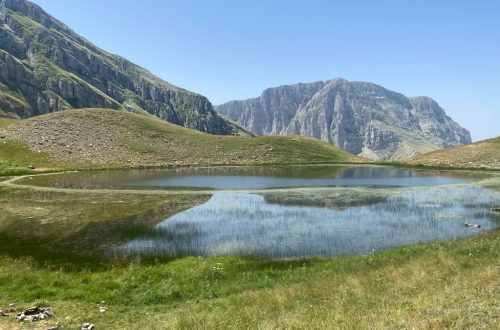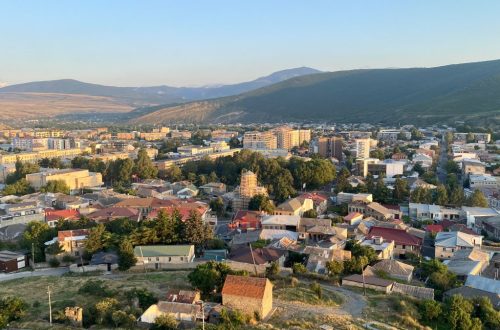
Is Malta Worth Visiting? An Honest Guide
The Mediterranean Sea is famous for many reasons. Right in the middle of its vast waters lands a small island nation. There, European, Latin, and Arab cultures create a rich pattern of traditions, beliefs, and practices.
If it’s unclear from the title, though, I am talking about Malta. However, is Malta worth visiting?
A Little Bit Of History
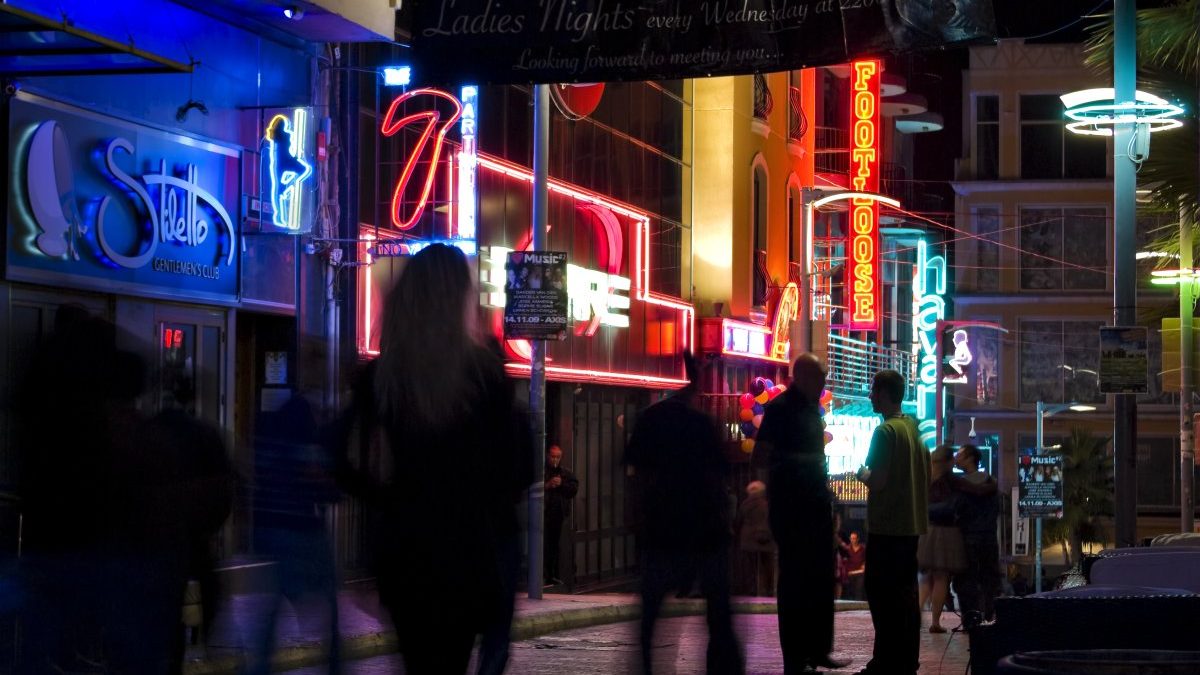
Malta is a small island nation located between Sicily and Lybia. Before declaring independence in 1964, it was under Roman, Arab, French, and British rule. This long process of adaptation has led to a unique culture present in every corner of the island. A trip to Malta is surely a trip back in time!
With a population of about 516,000 over an area of 316 km2, Malta is the tenth smallest country in the world. The Country consists of three islands, Malta, Gozo, and Comino.
Is Malta safe for tourists?
Malta is generally considered a safe destination for tourists. The country has a low crime rate, and violent crimes are rare. Maltese people are kind, friendly, and hospitable.
One of the first things that has to come to your mind when planning a trip is insurance.
Safetywing’s Nomad Insurance is one of the best options available out there. With a maximum coverage of 365 days, they are a great option whether you are a Nomad or not! They offer very low rates, but excellent coverage and immediate support (in a few minutes!). The best part? Nomad Insurance can be purchased even if you have left your home country already.
Lastly, they also cover extreme sports, something that can come in very handy if you are an adventurous soul.
However, like any other country, small instances of petty theft or scams may occur, so it’s always wise to exercise caution. Ensure that your valuables are secure and avoid isolated areas late at night. Malta also has very strong sun, so don’t forget to protect your skin!
| Quick safety tips for Malta: |
|---|
| Stay aware of your surroundings and keep an eye on your belongings. |
| Avoid isolated areas at night. |
| Keep emergency services number (112) handy in case of any possible emergency. |
| Consider buying travel insurance for any medical emergencies or unexpected situations. |
| Always use sunscreen and stay hydrated, especially during the hot summer months. |
Getting To Malta Island
Before we ask “is Malta worth visiting?”, we need to get to the island! Getting to Malta is easy. You’ll likely fly into Malta International Airport (MLA), the country’s only airport, which is connected to many large European cities. For a more scenic alternative, consider taking a ferry.
Regular services connect Sicily’s ports and Malta, offering a picturesque journey across the Mediterranean. Both air and sea routes are efficient, granting you smooth-sailing travel to Malta Island.
What is the best time to visit Malta?
The best time to visit Malta depends on your preferences and what you want to experience during your trip. The peak tourist season in Malta is during the summer months, from June to August, when the weather is hot and sunny, and the island is bustling with tourists.
This is the ideal time to enjoy the beautiful beaches, go swimming, and participate in water sports. However, keep in mind that the popular tourist sites can get crowded, and prices for accommodations and flights may be higher during this time.
If you prefer to avoid the crowds and enjoy more pleasant weather, consider visiting Malta during the shoulder seasons of spring (April to May) and autumn (September to October).
During these months, the temperatures are milder, and the island is less crowded, allowing you to explore the attractions and cultural sites more comfortably. Additionally, you may find better deals on accommodations and flights during these periods.
Another factor to consider when deciding the best time to visit Malta is the annual events and festivals. Malta hosts various cultural and historical events throughout the year, such as the Malta International Arts Festival in July and the Malta Jazz Festival in July.
Lastly, if you are interested in diving or snorkeling, the best time to visit Malta is during the spring and autumn months when the water is warmer and visibility is better. The underwater world around Malta is known for its stunning marine life and shipwrecks, making it a popular destination for diving enthusiasts.
Maltese Hospitality
One of Malta’s top selling points is its kind people. The Maltese are incredibly friendly and hospitable, always willing to help out where they can. Whether you’re lost, need directions, or just want a suggestion for the best local cuisine, don’t hesitate to ask.
How long should I plan to stay in Malta?
If you have a limited amount of time, a shorter stay of 3 to 4 days can still provide you with a taste of what Malta has to offer. During this time, you can focus on visiting the most iconic places such as the historic capital city of Valletta, Marxaxlokk and Comino.
On the other hand, if you have the luxury of time and want to see more of the Maltese culture and lifestyle, extending your stay to 10 days or more would be ideal. This will allow you to explore the lesser-known gems of the island. Additionally, you will be able to visit the neighboring island of Gozo, which is a destination on itself and offers its own unique attractions and natural beauty.
What are the visa requirements for visiting Malta?
To visit Malta, most travelers will need a valid passport. Citizens of the European Union (EU) and the European Economic Area (EEA) do not require a visa to enter Malta. This includes countries such as Germany, France, Italy, and Spain.
However, it’s important to note that the United Kingdom is no longer part of the EU, so British citizens should check the latest requirements. Additionally, citizens of certain non-EU countries, such as the United States, Canada, Australia, and New Zealand, can also enter Malta without a visa and stay for up to 90 days.
For citizens of countries that do require a visa to enter Malta, it’s necessary to apply for a Schengen visa. Malta is part of the Schengen Area. The Schengen visa allows visitors to travel freely within these countries for up to 90 days within a 180-day period. It’s important to apply for the visa well in advance of your planned trip, as processing times can vary.
What is the local currency in Malta?
The local currency in Malta is the Euro (€). Since Malta is a member of the European Union, it adopted the Euro as its official currency in 2008. This means that you will need to use Euros for your transactions, including shopping, dining, and transportation.
Credit cards are widely accepted in Malta, especially in hotels, restaurants, and larger stores. However, it’s always a good idea to carry some cash, as smaller establishments, local markets, and public transportation may prefer cash payments. ATMs are also readily available throughout the country, allowing you to withdraw Euros using your debit or credit cards. How expensive is Malta as a travel destination?
Is Malta Expensive to Visit?
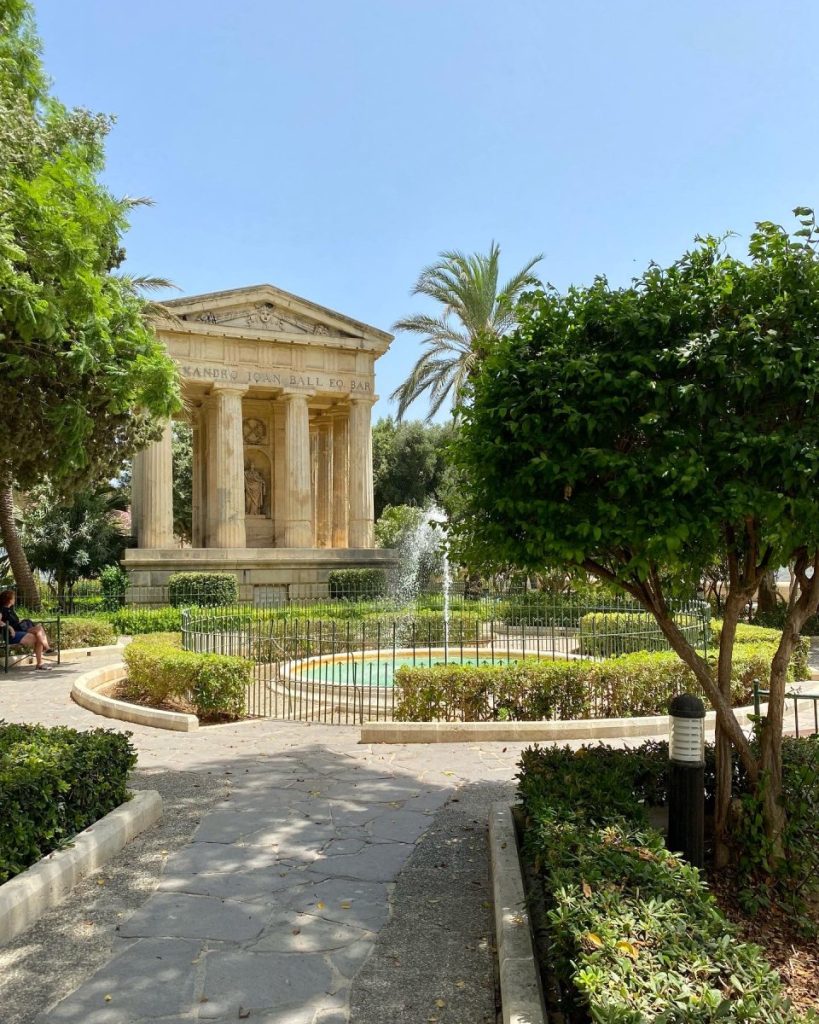
While Malta isn’t the cheapest European destination, smart planning can greatly help you boost your budget. By choosing affordable accommodations like hostels or guesthouses, and tasting the famous Maltese local cuisine atsmall restaurants and street food stalls, you can spare your wallet.
The cost of staying in Malta can vary. Major tourist hotspots like Valletta, Sliema, and St. Julian’s tend to have more expensive hotels. However, you can find more budget-friendly options if you’re up for exploring less crowded areas, or choosing guesthouses or apartments. Booking your stay early can also help you catch better deals and sidestep last-minute price hikes.
A meal in Malta cannot always cost you a fortune. If you choose local restaurants and traditional Maltese dishes, your food expenses can be minimal. Street food stalls and local markets will offer you a chance to have tasty food without burning a hole in your pocket. Cooking your own meals will help you save even more, and for that, local supermarkets and grocery stores are the best options. Keep in mind, though, that alcohol is relatively pricey here.
Transportation in Malta is budget-friendly. Buses and ferries form a reliable and cost-effective public transport system. As we’ll be discussing later, a travel card or pass can cut down expenses if will be frequently using public transport. Taxis and rental cars are options too but tend to be more expensive.
What is the local cuisine like in Malta?
Malta’s food scene is a celebration of its cultural background and history, reflected in the variety of Mediterranean flavors found in its unique dishes.The influences of Italian, Arabic, and British cuisines are visible in the traditional Maltese culinary repertoire.
The island’s geographical position in the heart of the Mediterranean Sea means seafood takes center stage in many Maltese meals. Local kitchens transform fresh fish into delightful dishes, whether it’s a simple, lemon-drizzled grilled fish or a comforting fish soup. Tuna also earns significant attention, featuring in salads or as the shining star of the main course. The Maltese have a unique way of preparing octopus. They skillfully cook it in an appetizing tomato sauce, making it incredibly tender and full of flavor.
But it’s not just savory delights Malta is known for; the island is also a haven for pastry lovers. The pastizzi, which is a flaky pastry filled with either ricotta cheese or crushed peas, is a favorite among both locals and tourists. These little bites of heaven are a common sight in bakeries and street food stands. I had the chance to try a variety of different flavors, and I can say i enjoyed every single one of them!
If you’re a food lover, Malta’s diverse food scene will not disappoint. You can explore an massive variety of international flavors, from classic Italian pasta to exciting Indian curries. Not to mention the delicious dishes from France and the world-famous Middle Eastern cuisine.
Malta’s restaurants and cafes are a haven for those who love to experience food from around the world.
Where To Stay During Your Trip To Malta
Out all of the Malta hotels we saw, we decided to stay in Sliema Hotel by ST Hotels. They offer clean and modern rooms, a lovely breakfast, and sensible pricing. They are also placed in Sliema, meaning that every part of the island is accessible through public transport.
Booking a hotel through our website earns us a small commission that helps us continue what we most love. This comes at no extra cost to you.
Moving Around
What is the best way to see Malta? Don’t get me wrong, renting a car is always a convenient way to get around. Yet, Malta (FYI, the country) has an efficient public transport system.
The bus can take you everywhere on the island without delays. I suggest getting the “Tallinja card”, which gives you access to all the public buses in Malta. For me, it was a life-saving choice. For your convenience, download the Tallinja app . It will make your trip to Malta a lot easier. It offers real-time tracking of the buses and can tell you how to get anywhere.
The only thing you are most certainly not ready for is the driving culture. And, oh man, it is an “interesting” experience. Even on the bus, driving felt like an extreme sport. A rather funny experience looking back to our trip to Malta.
The Best Things to do in Malta
1. Explore Valletta
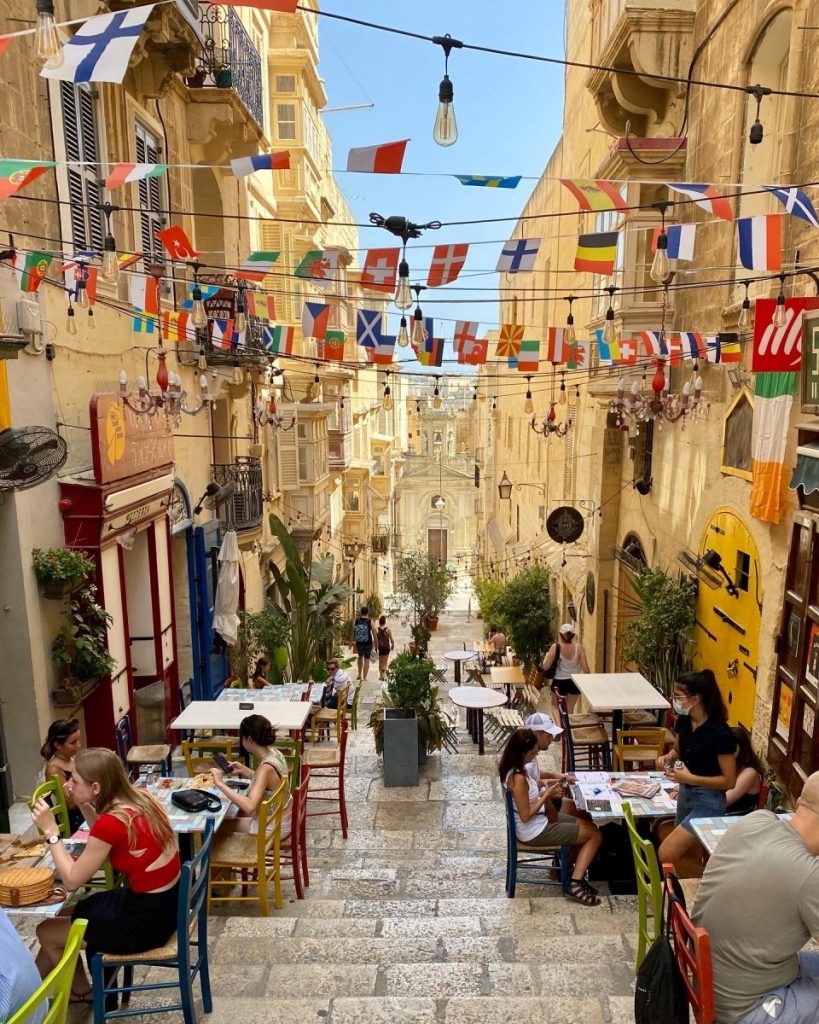
Officially recognized as a UNESCO World Heritage site in 1980, the capital of Malta is a book of history. A unique collection of churches, palaces, and museums are there to prove it! The architecture of Valletta’s streets ranges from mid-16th century Baroque to Modernism. No trip to Malta would be complete without it.
Arriving in Valletta, you will be greeted by the Triton fountain right outside the city gate. The main entrance leads to the merchant street, the capital’s main road.
A walk around Valletta offers an immersive medieval aura that is never enough. The city is small and walkable. The Grandmaster’s palace and the National war museum should be some of the most famous attractions.
The Lower and Upper Barrakka gardens are another quiet yet beautiful location to enjoy a break for refreshment. My favorite would be the lower ones, though. If, on the other hand, you need a place to enjoy a stunning view, visit Fort. Elmo.
If you love history and have more time in the island, don’t miss “The Three Cities” – Vittoriosa, Senglea and Cospicua. These cities, located across from Valletta in the Grand Harbour, are a the homes of old fortresses, beautiful architecture, and cobblestone streets that hint at tales of knights and sieges.
As you walk their narrow paths, you’ll see a mix of majestic palaces and simple homes, a testiment to Malta’s rich history. Don’t forget to visit the Gardjola Gardens in Senglea for their stunning views! Each city has its unique appeal and provides a sneak-peek into real Maltese life.
2. Visit Marsaxlokk
Marsaxlokk is a small fishing village in the South of Malta. It is famous for the homonym Market, which offers a wide range of products such as fish and traditional candy (tasty, but too much sugar for me).
The village is perfect for a delicious fish meal while enjoying the view of the odd traditional Maltese fishing boats. I was lucky enough to discover this place online; it was one of the most scenic ones in Malta! It was one of my favorite places during my trip to Malta!
You should also visit the famous St. Peter’s pool, a naturally shaped pool perfect for cliff jumping and swimming. It is accessible on foot, but the hot and humid Summer days make the way a bit unpleasant. A taxi drive could also do the job, but finding a sensible price won’t be easy.
3. Walk around Sliema-St. Julian’s
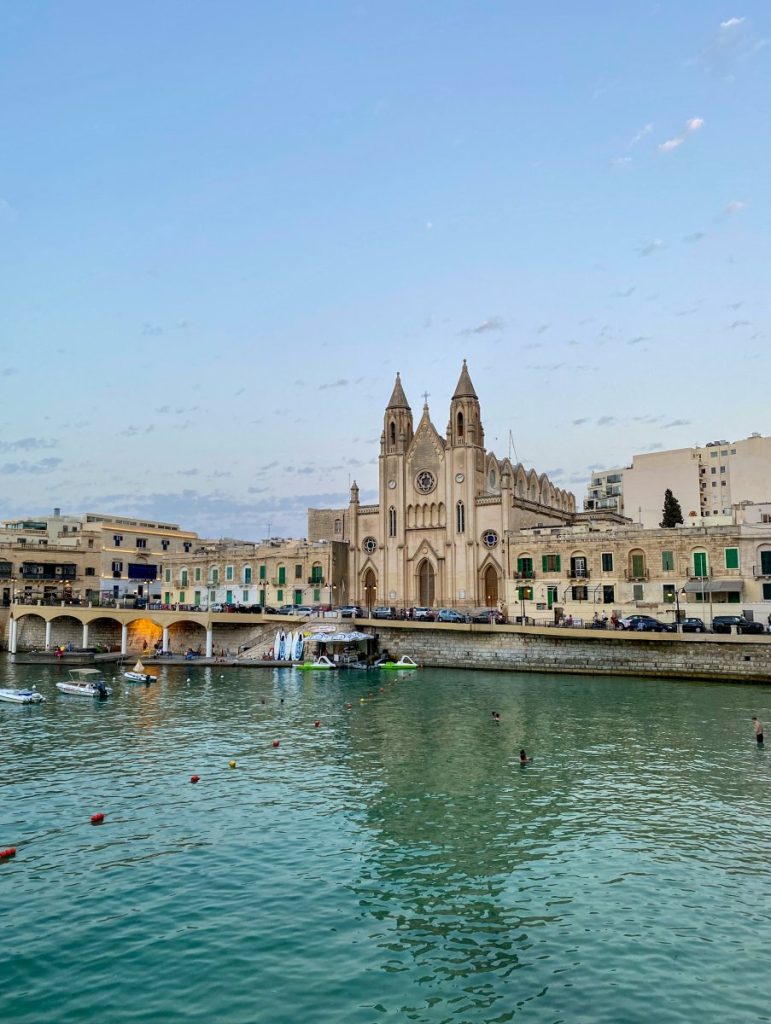
Located right next to Valletta, those two towns should be your go-to for accommodation during your trip to Malta. From there, you can access the capital or any other place on the island by boat or bus. This makes it the perfect place to set your base.
Sliema should also be the place to get a ferry for a day trip to Comino, Malta’s third island. You should bring your best bargaining skills to get the best price!
The coastal paved road connecting the two cities should be your go-to for an afternoon walk or run. The golden hour there was immense! Also, don’t forget to enjoy some churros to sweeten your day! Last but not least, take a night swim in the naturally formed pools existing throughout the coast.
4. Have the Night of your Life in Paceville
This place is the absolute must to enjoy the Maltese nightlife. Bars, clubs, and restaurants create a unique space packed with young people. The best part being it is a walkable distance away from Sliema! If you want to meet new people from around the world and party hard during your trip to Malta, Paceville is the place for you. Is Malta worth visiting? Still asking?
Yet Malta isn’t only about vibrant nightlife and cultural heritage sites. The island’s natural attractions are just as captivating
5. Visit Gozo
Do you want to discover more fantastic places on your trip to Malta? What could anyone say about this place? If you’re searching for a peaceful retreat, Gozo is your destination. It is less crowded than Malta, making it a perfect place for relaxation.
Make sure to visit two of Gozo‘s breathtaking sights: the Salt Plants and the remnants of the Azure Window. Whether you’re keen on snorkeling, want to uncover ancient temples, or simply enjoy the scenery, Gozo has it all. This serene island is a valuable highlight of any trip to Malta.
Gozo was for sure my favorite out of the three islands. You can learn more on my travel guide to Gozo.
6. Comino
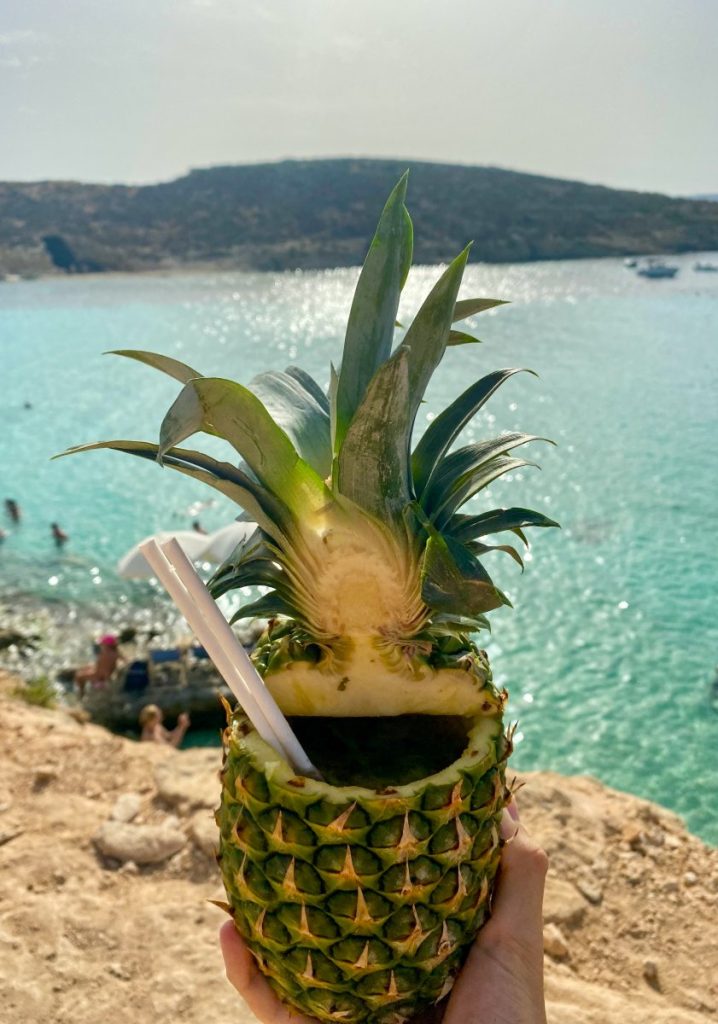
Located between Malta and Gozo, Comino is “a day trip to paradise.” Day trips to the island are organized by multiple tour operators. Bring your best bargaining skills to negotiate a better price, and you are ready to go!
Don’t forget to enjoy the famous (and not as expensive as they may seem) pineapple cocktails on the island. Be careful of the many wasps following you as you enjoy your drink.
The most famous attraction is the Blue Lagoon, a crowded beach with some of the clearest waters in Europe. However, there are many more places to discover by yourself on the smallest island in Malta! Is Malta worth visiting? It even has the paradise!
The island also has a hotel if you want to extend your trip. Hiking and cycling would be the best ways to explore more.
A (not so) little secret: Make sure your tour includes a stop at Crystal Lagoon. This less famous lagoon is the home of many caves inside which you can swim.
Are there any beautiful beaches in Malta?
Malta is home to several beautiful beaches that are worth visiting. As we discussed above, one of the most popular and picturesque beaches in Malta is the Blue Lagoon, located on the island of Comino. With its crystal-clear waters and white sandy shores, it offers a stunning setting for swimming and sunbathing.
Another notable beach is Golden Bay, situated on the northwestern coast of Malta. It boasts a wide stretch of golden sand and is surrounded by cliffs, providing a scenic backdrop. Mellieha Bay, also known as Ghadira Bay, is another beautiful beach known for its shallow waters and family-friendly atmosphere.
Final Thoughts: Is Malta Worth Visiting?
In the end, our question finds its clear answer. Is Malta worth visiting? absolutely! Imagine exploring ancient cities with cobblestone streets, and discovering megalithic temples that are older than the pyramids.
The turquoise waters surrounding the islands are perfect for relaxation, and the friendly locals add a special warmth to the experience. The blend of history, stunning landscapes, and a welcoming atmosphere makes it a unique and memorable destination for any traveler.


